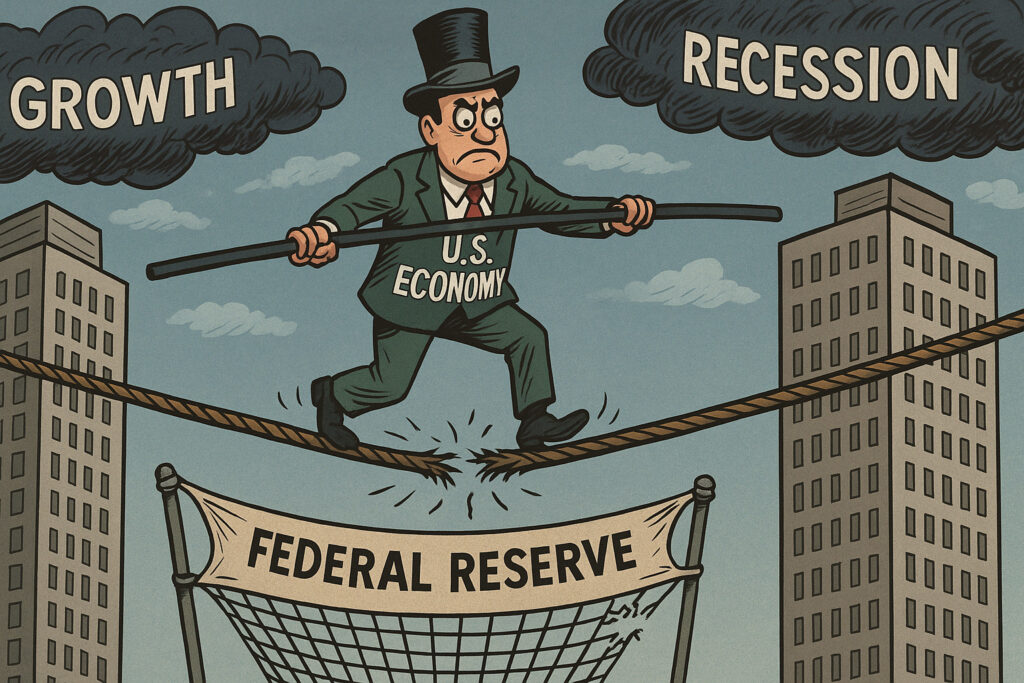On April 3, 2025, the Institute for Supply Management (ISM) released its closely watched Services Purchasing Managers’ Index (PMI) for the month of March. The report revealed a notable decline in the PMI to 50.8, a sharp drop from the February reading of 53.5. This marks the lowest level for the index since June 2024 and came in well below the consensus forecast of 53.0, signaling that momentum in the U.S. services sector is beginning to wane.
Understanding the ISM Services PMI
The ISM Services PMI is a vital barometer for U.S. economic health, as the services sector accounts for more than two-thirds of total economic activity. A reading above 50 signals expansion, while a reading below 50 indicates contraction. Although March’s figure still technically denotes growth, the pace of expansion has slowed significantly, raising red flags among economists and market participants.
The report measures several key components including business activity, new orders, employment, and prices. Notably, the employment component contracted sharply, and the overall reading implies that service providers are facing headwinds heading into the second quarter of the year.
Detailed Breakdown of the March Data
- Headline PMI: Fell to 50.8 from 53.5 in February, marking a nine-month low.
- Business Activity Index: Rose to 55.9, suggesting ongoing output strength despite broader slowdown.
- New Orders Index: Dropped to 50.4, just above contraction territory.
- Employment Index: Slumped to 46.2, a clear indication of contraction and the lowest since December 2023.
- Prices Index: Decreased to 60.9, still elevated but pointing to a slight easing in input cost inflation.
- Supplier Deliveries Index: Dropped to 50.6, a sign that supply chains are stabilizing.
These numbers paint a mixed but cautious picture. Business activity remains robust, likely driven by backlogs and ongoing demand in select industries. However, the softness in new orders and employment is concerning.
Sector Performance and Survey Respondent Insights
Only 10 out of the 18 industries tracked by the ISM reported growth in March, down from 14 in the previous month. This dispersion suggests that the slowdown is not isolated to a few sectors but is broad-based.
Survey respondents cited growing economic uncertainty, tighter corporate budgets, and cautious consumer behavior as reasons for the moderation in services activity. Additionally, ongoing geopolitical tensions and elevated borrowing costs were cited as headwinds.
One respondent in professional services noted, “Client demand remains, but decisions are delayed due to uncertainty in policy and market conditions.” Another from the healthcare sector observed, “Staffing shortages are becoming more manageable, but inflation is impacting procurement.”
Financial Market Response
The market reaction was swift and telling. Equity markets pared earlier gains, with the S&P 500 dipping into negative territory intraday as investors reassessed economic growth expectations. Treasury yields fell as bond traders bet on a more dovish path from the Federal Reserve. Meanwhile, gold prices climbed above $3,100 per ounce as safe-haven demand resurfaced.
The U.S. Dollar Index also weakened against a basket of major currencies, reflecting decreased confidence in the trajectory of domestic growth. Technology and consumer discretionary stocks underperformed as investors rotated into defensive sectors like utilities and healthcare.
Economic Context and Fed Policy Implications
March’s ISM Services PMI comes at a critical juncture for the U.S. economy. The Federal Reserve, which held rates steady in its March meeting, is closely monitoring incoming data to determine the path of monetary policy for the remainder of the year.
While inflation remains above target, the softening in service-sector activity and particularly the contraction in employment may prompt the Fed to exercise greater caution. Futures markets have begun pricing in the possibility of a rate cut as early as July, a stark shift from expectations just one month ago.
If economic data continues to deteriorate, the Fed could face a balancing act between maintaining credibility on inflation and supporting a slowing economy. Policymakers will also be keenly focused on next week’s release of the March Nonfarm Payrolls report for additional confirmation of labor market trends.
Broader Economic Indicators and Forecast
Economists have started revising their Q1 GDP growth forecasts downward. Previously expected to be in the 1.0-1.5% range, several Wall Street firms now see growth dipping below 0.5%, with some even bracing for a potential contraction.
High interest rates are weighing on both consumer and business spending, and while manufacturing remains in contraction, the services sector had been the primary source of resilience. With this latest report, that resilience appears to be weakening.
Global Perspective
The U.S. services slowdown is part of a broader global trend. Similar indices from the Eurozone and China have also shown signs of deceleration, with global trade flows and sentiment impacted by persistent geopolitical instability and fragmented supply chains. As the world’s largest economy shows signs of fatigue, global markets are recalibrating for a potentially softer growth environment through the rest of 2025.
Investment Takeaways
Investors should brace for increased volatility in the months ahead. Key strategies might include:
- Sector Rotation: Moving capital into defensive and value-oriented sectors like utilities, healthcare, and consumer staples.
- Fixed Income Rebalancing: Considering longer-duration Treasuries if rate cuts become likely.
- Commodity Exposure: Maintaining or increasing allocations to gold and energy as hedges against macroeconomic risk.
- Dollar Hedging: Exploring non-USD denominated assets as the greenback shows signs of weakening.
Conclusion
The March 2025 ISM Services PMI report is a wake-up call for markets and policymakers alike. While the economy is still growing, the slowdown is real and broad-based. Investors should prepare for a more complex and potentially turbulent environment as the U.S. economy grapples with higher rates, labor market strains, and waning demand in key service industries.
The coming weeks will be critical in determining whether this is a temporary dip or the beginning of a more prolonged slowdown. All eyes now turn to employment data and corporate earnings to paint a clearer picture of what’s next for the U.S. economy.
Written on April 3, 2025
